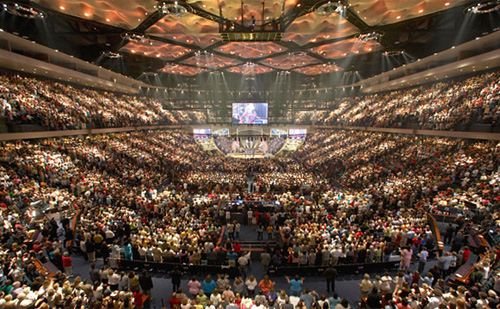Is Your Church Hard to Get In?
By The A Group
The natural tendency of things is to go from simple to complex. It happens in businesses and it certainly happens in churches. Size, resources, both financial as well a people, dictate a lot of what a church can do in its infancy. But growing organizations, by nature of growth, become increasingly sophisticated and, thus more complex. Unwittingly, churches develop their own language and culture and a set of assumptions about their organization. One of the most dangerous of these assumptions is that the church's internal culture is a mirror of its community, and, therefore, easy for newcomers to understand.

I can think of so many examples, but one that comes to mind is the way churches have creative names for every age-group ministry: Fuse, Stretch, MainStreet, The Loft, to name a few. Familiarity causes staff to drop the most important of denominators, the age descriptor. What started out as Fuse (Middle School Group) ends up being just "Fuse." Who knows what that is? Well, the people who have been around the longest and are now in charge of the thing. I have seen signs that read "Stretch this way." I did stretch after my run, so I'm OK for now. You know where this is going.
Large churches have multiple ministries with their own identity and communication needs. Left alone, this becomes a multi-layered communication nightmare within other internal ministries that are trying to do their jobs effectively but are led by good-hearted people who see only their piece of the pie, but if you bring all these pieces together, the pie is quite large and not very appetizing. It's too much. So we complicate a bit more, creating a few more brochures throwing in 10 more cool logos to go along with the 255 already existing ones.
This is a tough battle to win. But in order to be effective and continue to reach out to people outside the faith, churches need to simplify and streamline their organizational and communications structures. My company, The A Group, develops complicated software that is yet very simple to operate. Churches should do the same at the experiential level. A good question to ask from time to time is, "how hard are we making for people to get in?" But don't answer that question in a staff meeting. Ask someone new who visited for the first time last weekend. They'll have a entire different perspective than you.












